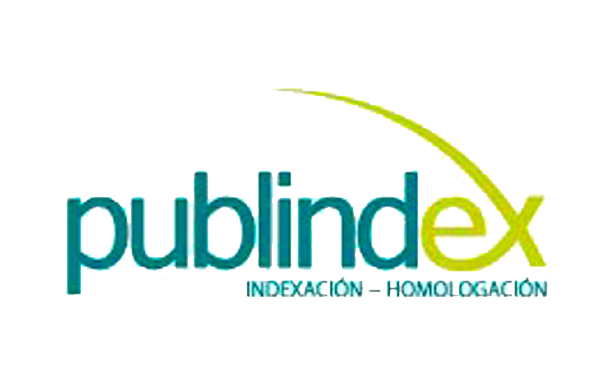Derecho y literatura “desde el sur”: figuras de abogado en Cortázar
Copyright and Licensing:
Derechos de autor 2024 Opinión Jurídica

Esta obra está bajo licencia internacional Creative Commons Reconocimiento-NoComercial-SinObrasDerivadas 4.0.
- Articles
- Enviado: abril 6, 2023
-
Publicado: junio 24, 2024
Resumen
Este trabajo propone un análisis de los roles y figuras de abogados en la literatura, siguiendo una de las líneas de trabajo del “movimiento derecho y literatura”. Para ello, se concentra en un escritor argentino, central en la literatura latinoamericana: Julio Cortázar. Dentro de su obra, se recorta un corpus de dos cuentos unidos por la figura de un abogado y se propone una lectura desde la perspectiva del “derecho y la literatura” que ilumina algunos problemas en la práctica jurídica y también señala una dirección para reformularla.
Referencias
- Alfieri, A. V. (1991). Speaking Out of Turn: The Story of Josephine V. Georgetown Journal of Legal Ethics, 4, 619-653. https://repository.law.miami.edu/fac_articles/590/
- Arsuaga, T. (2009). Derecho y literatura. Origen, tesis principales y recepción en España. Working paper IE Law School, AJ8-157.
- Barrera López, T. (1986). Los mecanismos discursivos de “Diario para un cuento”. En Lo lúdico y lo fantástico en la obra de Cortázar. Coloquio Internacional, vol. 2 (pp. 155-165). Fundamentos.
- Binder, G. y Weisberg, R. (2000). Literary Criticisms of Law. Princeton University Press.
- Bourdieu, P. (1996). Las reglas del arte. Génesis y estructura del campo literario. Anagrama.
- Cortázar, J. (1963). Algunos aspectos del cuento. Casa de las Américas, (15-16), 303-326.
- Cortázar, J. (1967). La vuelta al día en ochenta mundos. Siglo xxi.
- Cortázar, J. (1973). El libro de Manuel. Sudamericana.
- Cortázar, J. (1975). Fantomas contra los vampiros multinacionales. Excelsior.
- Cortázar, J. (2004 [1982]). Diario para un cuento. En Bestiario/Deshoras (pp. 207-237). Alfaguara.
- Cortázar, J. (1995a). Estado actual de la narrativa en Hispanoamérica. En Obras completas, t. iii (pp. 89-111). Alfaguara.
- Cortázar, J. (1995b [1951]). Las puertas del cielo. En Bestiario (pp. 107-125). Alfaguara.
- Cover, R. (2002). Derecho, narración y violencia. Poder constructivo y poder destructivo en la interpretación judicial. Gedisa.
- Cunningham, C. D. (1989). A Tale of Two Clients: Thinking About Law as Language. Michigan Law Review, 87(8), 2459-2494. https://repository.law.umich.edu/mlr/vol87/iss8/12/
- Cunningham, C. D. (1992). Lawyer as Translator Representation as Text: Towards an Ethnography of Legal Discourse. Cornell Law Review, 77(6), 1298-1387. https://scholarship.law.cornell.edu/clr/vol77/iss6/4/
- Delgado, R. (1989). Storytelling for Oppositionists and Others: A Plea for Narrative. Michigan Law Review, 87(8), 2411-2441. https://repository.law.umich.edu/mlr/vol87/iss8/10/
- Falconi, D. (coord.) (2016). Dossier Derecho y Literatura en América Latina. Iuris Dictio, (18), 13-135. https://doi.org/10.18272/iu.v18i18
- Ferguson, R. (1984). Law and Letters in American Culture. Harvard University Press.
- Gaaker, J. (1998). Hope Springs Eternal. An introduction to the work of James Boyd White. Amsterdam University Press.
- Gilkerson, C. (1992). Poverty Law Narratives: The Critical Practice and Theory of Receiving and Translating Client Stories. Hastings Law Journal, 43(4), 862-945. https://repository.uclawsf.edu/hastings_law_journal/vol43/iss4/5/
- Goldchluk, G. (2002). Julio Cortázar y la escritura incesante: de “Diario para un cuento” a “Las puertas del cielo”. En M. Goloboff (ed.), Julio Cortázar y el relato fantástico (pp. 79-91). Universidad Nacional de La Plata.
- Goloboff, M. (1998). Julio Cortázar. La biografía. Continente.
- Goloboff, M. (2000). Cortázar revisitado. Orbis Tertius, 4(7), 1-7. https://www.orbistertius.unlp.edu.ar/article/view/OTv04n07d02
- Jiménez Moreno, M. y Caballero Hernández, R. (2015). El movimiento derecho y literatura. Aproximaciones históricas y desarrollo contextual. Revista de la Facultad de Derecho de México, 65(263), 47-75. https://doi.org/10.22201/fder.24488933e.2015.263.59631
- Jitrik, N. (1971). Notas sobre la “zona sagrada” y el mundo de los “otros” en Bestiario, de Julio Cortázar. En El fuego de la especie. Ensayos sobre seis escritores argentinos (pp. 47-62). Siglo xxi.
- Kahan, D. M. (2011). Neutral Principles, Motivated Cognition, and Some Problems for Constitutional Law. Harvard Law Review, 125(1), 1-77. https://harvardlawreview.org/print/vol-125/neutral-principlesmotivated-cognition-and-some-problems-for-constitutional-law/
- Knickerbocker, D. (1991). La teoría literaria implícita en “Diario para un cuento” de Julio Cortázar. Inti: Revista de literatura hispánica y transatlántica, (34), 151-158. https://digitalcommons.providence.edu/inti/vol1/iss34/14
- López, G. (1989). Reconceiving Civil Law Practice: Seven Weeks in the Life of a Rebellious Collaboration. Georgetown Law Journal, 77(4), 1603-1717. https://repository.library.georgetown.edu/bitstream/handle/10822/1084729/glj_v077_i04.pdf?sequence=4&isAllowed=y
- Ludmer, J. (1999). El cuerpo del delito. Un manual. Libros Perfil.
- Malauire, P. (1997). Droit et Littérature. Anthologie. Editions Cujas.
- Mittica, M. P. (2009). Diritto e letteratura in Italia. Stato dell’arte e riflessioni sul método. Materiali per una storia della cultura giuridica, (1), 273-299. http://doi.org/10.1436/29111
- Nedelski, J. (1990). Law, Boundaries, and the Bounded Self. Representations, (30), 162-189.
- Nussbaum, M. (1993). The Use and Abuse of Philosophy in Legal Education. Stanford Law Review, 5(6), 1627-1645.
- Nussbaum, M. (2004). La fragilidad del bien. Fortuna y ética en la tragedia y la filosofía griega. La Balsa de la Medusa.
- Nussbaum, M. (2006). El conocimiento del amor. Ensayos sobre filosofía y literatura. Antonio Machado.
- Olson, G. (2010). De-Americanizing Law and Literature Narratives: Opening Up the Story. Law & Literature, 22(2), 338-364. https://doi.org/10.1525/lal.2010.22.2.338
- Orloff, C. (2014). La construcción de lo político en Julio Cortázar. Godot.
- Petch, S. (2007). Law, Literature, and Victorian Studies. Victorian Literature and Culture, 35(1), 361-384.
- Peters, J. S. (2005). Law, Literature, and the Vanishing Real: On the Future of an Interdisciplinary Illusion. pmla, 120(2), 442-452.
- Porsdam, H. (2009). From Civil to Human Rights. Dialogues on Law and Humanities in the United States and Europe. Edward Elgar Publishing.
- Porsdam H. y Elholm, T. (2012). Dialogues on Justice: European Perspectives on Law and Humanities. De Gruyter. https://doi.org/10.1515/97831102693830
- Posner, R. (2009). Law and Literature (3° ed.). Harvard University Press.
- Prego, O. (1985). La fascinación de las palabras, conversaciones con Julio Cortázar. Muchnik Editores.
- Roggero, J. (2016). Hay derecho y literatura en Argentina. Anamorphosis, 2(2), 269-292. https://doi.org/10.21119/anamps.22.269-292
- Sáenz, M. J. (2019a) “Qué puede aprender el derecho de la literatura?”: notas sobre la importancia de la discusión derecho/literatura en el pensamiento jurídico. Derecho pucp, (82), 437-454. https://doi.org/10.18800/derechopucp.201901.015
- Sáenz, M. J. (2019b). Derecho y Literatura. Eunomía. Revista En Cultura de la Legalidad, (16), 273-282. https://doi.org/10.20318/eunomia.2019.4706
- Sáenz, M. J. (2019c). Reseña bibliográfica: Género, derecho y narración. Sobre: Reproductive Rights and Justice Stories. Revista Academia, 17(34), 437-451. http://www.derecho.uba.ar/publicaciones/rev_academia/revistas/34/resena-bibliografica-genero-derecho-y-narracion.pdf
- Sáenz, M. J. (2021). Las relaciones entre el derecho y la literatura. Una lectura del proyecto de Martha Nussbaum. Marcial Pons.
- Schvartzman, J. (1996). Julio Cortázar del lado de acá. En Microcrítica. Lecturas argentinas (cuestiones de detalle) (pp. 15-24). Editorial Biblos.
- Smith, J. A. (1979). The Coming Renaissance in Law and Literature. Journal of Legal Education, 30(1/2), 13-26.
- Sosnowski, S. (2000). Cortázar, necesario. Orbis Tertius, 4(7), 1-7. https://www.orbistertius.unlp.edu.ar/article/view/OTv04n07d04
- Tremblay, P. R. (1992). A Tragic View of Poverty Law Practice. The District of Columbia Review, 1(1), 123-142. https://digitalcommons.law.udc.edu/udclr/vol1/iss1/8/
- Trindade, A. K. y Gubert, R. M. (2009). Derecho y literatura. Acercamientos y perspectivas para repensar el derecho. Revista Electrónica del Instituto de Investigaciones “Ambrosio L. Gioja”, 3(4), 164-213. http://revistas.derecho.uba.ar/index.php/revista-gioja/article/view/240
- Trindade, A. K. y Bernsts, L. (2017). The Study of Law and Literature in Brazil: development, evolution and expansion. Anamorphosis. Revista Internacional de Direito e Literatura 3(1), 225-257. https://doi.org/10.21119/anamps.31.225-257
- Vargas Llosa, M. (1997). Prólogo: La trompeta de Deyá. En Cuentos completos: 1945-1966, vol. 1 (pp. 13-26). Alfaguara.
- Weisberg, R. H. (1984). The Failure of the Word. The Protagonist as Lawyer in Modern Fiction. Yale University Press.
- Weisberg, R. H. (1989). The Law and Literature Enterprise. Yale Journal of Law & the Humanities, 1(1), 1-67. https://openyls.law.yale.edu/handle/20.500.13051/7238
- White, J. B. (1973). The Legal Imagination. Chicago University Press.
- White, J. B. (1989). What Can a Lawyer Learn from Literature? Harvard Law Review, 102(8), 2014-2047. https://repository.law.umich.edu/reviews/134/
- White, L. E. (1990a). Subordination, Rethorical Survival Skills, and Sunday Shoes: Notes on the Hearing of Mrs. G. Buffalo Law Review, 38(1), 1-58. https://digitalcommons.law.buffalo.edu/buffalolawreview/vol38/iss1/3/
- White, L. E. (1990b). Goldberg v. Kelly on the Paradox of Lawyering for the Poor. Brooklyn Law Review, 56(3), 861-888.
- Wigmore, J. (1908). A List of Legal Novels. Illinois Law Review, 2.
- Williams, P. J. (1991). The Alchemy of Race and Rights. Harvard University Press.
Cómo citar
Sáenz, M. J. (2024). Derecho y literatura “desde el sur”: figuras de abogado en Cortázar. Opinión Jurídica, 23(49), 1-26. https://doi.org/10.22395/ojum.v23n49a40
Descargas
La descarga de datos todavía no está disponible.















